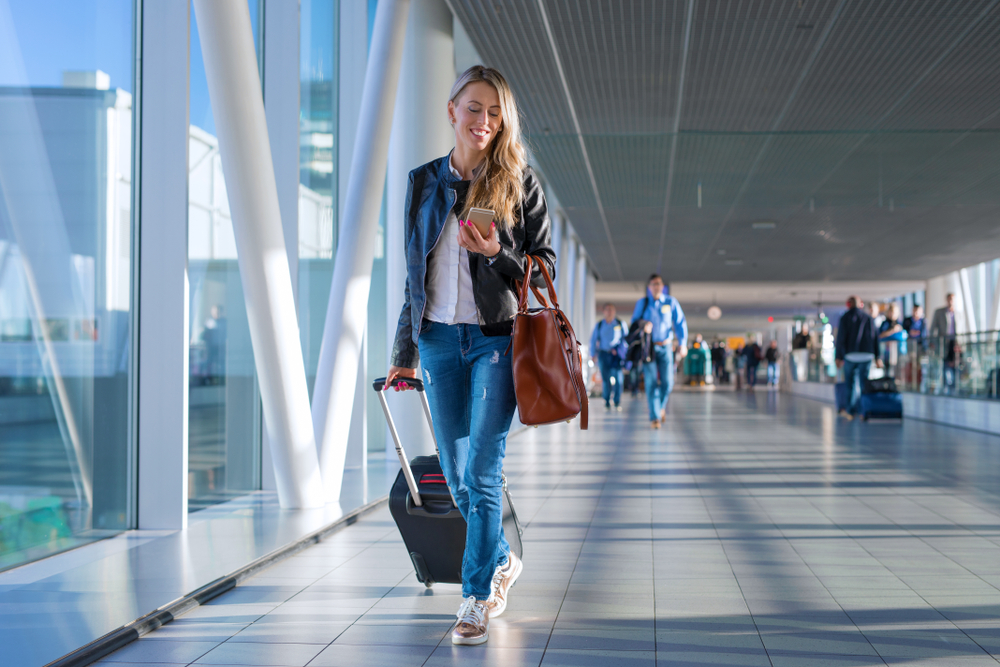When it comes to travelling, comfort and style should go hand in hand. The airport is the perfect place to showcase your fashion sense while prioritising comfort. To help you elevate your airport look, we have curated five essential tips that will ensure you ace your style game. Here are 5 ways to ensure your perfect airport look with high-quality and stylish apparel, wherein you can effortlessly blend fashion and functionality by Vridhi Somani, Designer and Tanveer Daswani, Founder, Baller Athletik:
- Embrace Tech-Infused Athleisure
Achieving the perfect airport look is effortlessly accomplished by embracing the modern athleisure wear, especially with innovative tech-infused pieces. Ever heard of infrared powered athleisure that can make you feel fresh when you land? Select stylish yet comfortable garments to effortlessly create an athleisure-inspired ensemble that seamlessly transitions from the airport to your final destination. - Comfortable yet stylish attire
Opt for comfortable clothing that allows freedom of movement, especially if you have a long flight ahead. Choose well-fitted jeans, leggings, or loose-fitting trousers paired with a cosy sweater or a stylish jacket. Add a touch of style with a statement accessory like a scarf or a hat. - Layer Up with Versatile Outerwear
Weather conditions can be unpredictable, making layering a must for any airport ensemble. Bring in the element of lightweight jackets or stylish windbreakers into your outfit. These versatile outerwear options not only add a touch of style but also provide practicality and protection from changing temperatures. - Pack a Versatile Jacket or Blazer
A well-fitted jacket or blazer can instantly elevate your airport look. Choose a versatile piece that can be easily paired with different outfits. It adds a touch of sophistication to your ensemble and can be handy if the airport or plane gets chilly. - Carry-on luggage
Choose a stylish and functional carry-on bag or backpack that compliments your outfit. Look for a size that meets the airline’s carry-on requirements and has enough compartments to keep your essentials organised. A well-designed bag can enhance your overall airport look while being practical for storing your travel necessities. - Prioritise Comfortable Footwear
Long walks through terminals and security checkpoints call for comfortable footwear. Opt for sneakers or trainers that combine comfort, support, and style. Whether you prefer classic white sneakers or trendy designs, their footwear collection ensures you travel with ease while looking effortlessly cool. - Don’t Forget the Accessories
Accessories can instantly elevate your airport look. Accessories, including caps, beanies, and stylish backpacks. Add a touch of personality to your outfit with their accessories, making a statement while keeping your essentials organised. - Pay Attention to Grooming
A well-groomed appearance can significantly enhance your overall airport look. Take care of your hair, nails, and skin before your trip. Carry travel-sized grooming essentials like moisturiser, lip balm, and hand sanitizer to keep yourself fresh and clean throughout your journey. - Travel in Confidence
The key to acing your airport look is confidence. When you feel good in what you wear, your style shines through. Choose brands that have high-quality sports and athleisure pieces, brands that are designed to make you feel comfortable and confident throughout your journey. Embrace their stylish designs, superior fabrics, and attention to detail to exude confidence wherever your travels take you.
With these five tips, you can effortlessly ace your airport look while prioritising both style and comfort. By incorporating trendy sportswear and athleisure pieces into your ensemble, you elevate your style game to new heights. So, next time you head to the airport, make a bold fashion statement while enjoying the utmost comfort and functionality. Travel in style, confidence, and ease with their exceptional apparel and accessories. Bon voyage!



